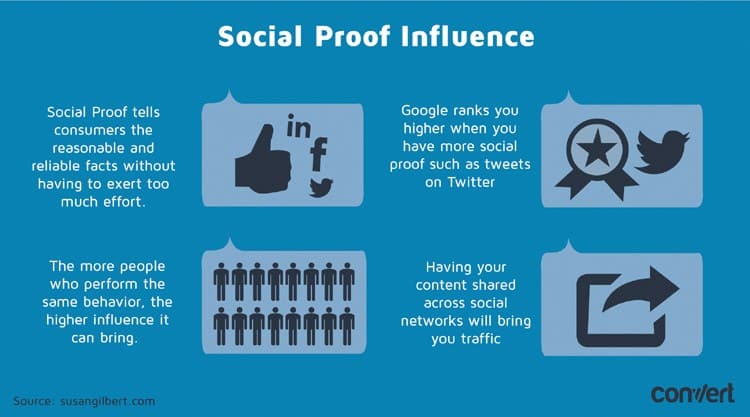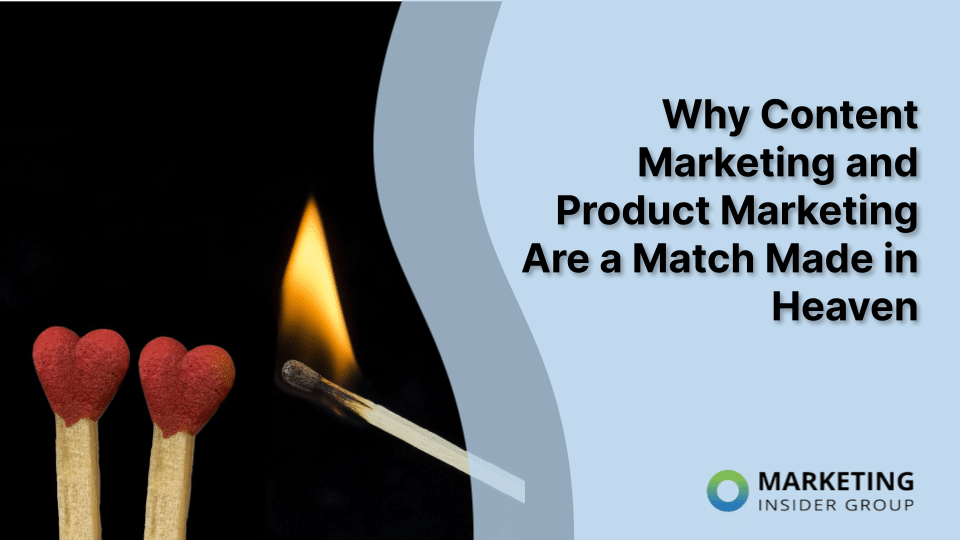
How to Win the Marketing Game with Psychology
What do you think is the key to successful marketing? Many would say it comes down to understanding your audience. This is certainly true, but once you’ve gathered intelligence on your audience, what do you do with that information?
Businesses pour thousands of dollars each year into web, mobile, radio, and TV advertising. The average B2B business reports a $185,000 annual budget, and many expect that number to rise by next year.
In its essence, successful marketing boils down to understanding the mind of your customer and using psychology to influence them to perform the desired action. Therefore, before developing marketing strategies and tactics around messaging, it pays to analyze how the human mind processes information.
When you recognize your audience’s emotions and behaviors and why they act the way they do, you’ll more likely be able to develop compelling messaging that drives results.
Smart marketers use psychology in a strategic way to both attract and engage consumers. If you can master these psychology tricks too, you’ll help your brand stick in the mind of your target audience, making them more likely to buy whatever you’re selling.
Quick Takeaways:
- Understanding what makes your customers tick is key to successfully marketing to them.
- Harness the power of emotions and storytelling to make your marketing more engaging.
- Using elements like imagery, reciprocity, trust signals, and urgency, you can develop a more robust marketing strategy that’s based on customer behavior and takes advantage of psychological biases.
Understand Marketing Psychology
Businesses who utilize marketing psychology incorporate a variety of psychological principles into their marketing content and sales strategies. While most marketers aren’t psychologists, you’re still able to adapt elements that allow you to engage with your consumers respectfully and ethically.
A few ways you can implement marketing psychology include:
- Position your services and products as a solution instead of a list of features
- Showcase your flaws to build consumer trust
- Enforce that your services hold a higher value than the competition
- Make your customers feel like you built a promotion just around them
- Introducing urgency and fear if your customers don’t take action
Human brains are hard-wired to seek connection with other humans.
1. Learn Neuromarketing
Have you ever wondered why, for decades upon decades of marketing, we still see images of families or friends bonding with each other in our ads? It’s fairly simple, really. Brands want to be associated with bringing people together.
Forming connections and uniting people are powerful marketing tactics. And how do we know this? The science backs it up.
Neuroscience tells us that human connection is a deep, physical need for humans. Rather than being driven by self-interest alone, as the common assumption would have us believe, the desire for emotional connection is actually hard-wired into our brains. Positive or negative social interactions manifest as physical sensations — that’s how strongly we crave connection. According to Matthew Lieberman, author of “Social,” “We don’t focus on being connected solely in order to extract money and other resources from people — being connected needs no ulterior motive.”
This principle has wide-ranging applications in the business world, from incentivizing employees to determining the very products and services companies offer. And this same principle of seeking connection can be applied in the marketing world, too.
“Connecting with consumers in a way our brains are designed is a powerful proposition,” says Charlotte Blank, chief behavioral officer of Maritz. “Insights from behavioral science can help us grow beyond counting likes (which don’t necessarily mean much) toward building true engagement.”
Many marketers are additionally employing neuromarketing to connect with consumers on a deeper level. Neuromarketing is a newer field that utilizes medical technology, such as magnetic resonance imaging (MRI) and other methods for measuring brain activity, to study the brain and predict customer decision-making.
There is an obvious crossover between psychology and marketing. However, the trick is persuading (but not manipulating) potential customers to think differently about your brand. How?
2. Appeal to Customers’ Emotions
The only way to win the marketing game is to win the hearts and minds of your target audience. Appealing to their minds is the easy part – crafting a logical argument about what your product and service can do for them should form the basis of your marketing communications.
However, to really be successful, your marketing campaigns must also tap into the emotions of your customers. Getting this right is an essential part of any marketing strategy – in other words, focus on the benefits, not the features.
It’s important to note that emotional marketing tends to be more effective when you’re speaking in a B2C context. If you’re trying to market to other businesses, it’s more likely that your audience will have their logical hats on and will be looking for how your product can be useful to them, rather than how it makes them feel.
But if you are talking directly to consumers, it is really important to connect with them on an emotional level and to promote a positive emotional response such as happiness, excitement, or inspiration. A 2016 study showed that individuals who build an emotional connection with a brand are 8.4 times more likely to trust the brand, and 7.1 times more likely to make a repeat purchase.
3. Become Their Friend
Speaking of emotional responses, it’s just as important for your brand to appear likable as it is for you to have good products.
Consumers are becoming increasingly distrustful of big corporations. Winning their trust and developing a friendly and approachable brand voice is vital to building engagement and a loyal following.
Being honest and authentic with your audience can go a long way to winning them over. Encouraging two-way communications is also important – don’t just bombard them with marketing messages – listen to what they have to say and act on it.
Some companies have had huge marketing success with chatbots when they’re well-programmed to represent the face of the brand. A friendly chatbot doesn’t just tell the customer information about your company. It also feels like someone is actually paying attention to what they say and cares about how they feel.
4. Craft Shared Experiences
Experiential marketing is a hot buzzword these days, but a properly planned event can do wonders for inspiring real-world connections among consumers and with your brand. The best experiential marketing events bring out an emotional response, teach a practical lesson, and connect with the brand in a way that flows naturally from consumer desires.
Look at Lean Cuisine’s recent #WeighThis campaign. The company installed scales throughout Grand Central Station in New York City and invited participants to “weigh in” by writing down the accomplishments for which they want to be weighed rather than the dreaded numbers they were acquainted with. This inspired camaraderie between participants and established Lean Cuisine as a comrade in the fight for body positivity.
There’s also the opportunity to add a touch of surprise and delight when you’re bringing people together. Guinness did just this with its Guinness Class experiential campaign. In an effort to raise its profile to the ranks of luxury brands, Guinness had representatives dress in flight attendant uniforms and enter bars all across Britain, offering a random prize to anyone who ordered the brewer’s signature pint. While some participants received just a small keychain, others received an all-expenses-paid trip to Dublin, raising the campaign’s excitement level — as well as consumers’ positive associations with the company.
5. Show Social Proof
Humans are social creatures and tend to have a herd mentality. You may feel like you’re a unique snowflake, but the fact is it’s incredibly difficult to go against the grain and ignore what others around you are doing. Going with the flow is easier and it feels good too.
How to harness this quirk of human nature in your marketing? Use the power of social proof.
Social proof, which author Robert Cialdini describes as “the tendency to see an action as more appropriate when others are doing it,” is a powerful motivator for consumers. Leveraging outside opinions can raise your brand’s legitimacy and lead to an increase in sales.
Social media has made the habits and preferences of others around us highly visible online, and as marketers, we can use this trend to our advantage. One very simple example of social proof in action is when “influencers” buy fake followers to artificially bump their follower count. This isn’t only to impress brands that might choose to advertise with them – follower counts tend to grow exponentially as they increase. If you see someone followed by tens of thousands of people, you’re more inclined to follow them too, regardless of the quality of the content produced.
Whether from experts and celebrities or average users, positive recommendations from others can do much of the work for you. “If your company collects testimonials, sprinkle them throughout your website on the pages you know will be seen often,” says social proof expert Neil Patel. “A plug from someone who says they learned valuable lessons from my content can help persuade a visitor who’s not sure whether or not to complete the form.”
How can you use social proof in your marketing efforts? Make it easy to share your content and display like and share counts on your articles. Encourage user-generated content, reviews, and testimonials. And consider engaging in influencer marketing, but make sure to only work with influencers who reflect your brand values.

Three important factors impact the value of these reviews: quantity, quality, and authenticity. Hundreds of five-star ratings will obviously win over a small handful, but having a smattering of lower-star ratings can actually help you rather than hurt you. They prove that your brand isn’t hiding negative responses, which makes the positive reviews all the more credible — and valuable. As long as your reviews lean in a praising direction overall, you’ll reap the benefits of social proof.
6. Build an Engaged Community
What better way is there to inspire people to connect than by creating opportunities for consumers to do so under your brand’s banner? Companies can use online forums or groups to share resources and bring together consumers and audiences with similar interests.
One great example of this strategy is led by MDR, the education division of Dun & Bradstreet. The company created WeAreTeachers.com as a robust community that shares resources and brings together educators in a supportive, encouraging environment. By extension, it helps establish the company as a trusted resource for its educator audience.
There is no need to press an advertising agenda with these forums. In fact, it’s better to avoid overt promotion and let the community atmosphere speak for itself. Save the hard sell for a different marketing channel and allow your forums to act solely as an opportunity for consumers to gain trust with your brand.
All of us — brand advocates, product developers, and consumers alike — crave connection. It’s basic human nature. So lean into that desire and provide your audience with the means to interact. Chances are good they’ll respond in kind, making connections with your brand that can bring you the next level of success.
7. Emphasize Exclusivity
Most people love to feel like they’re part of an exclusive club. This is one reason why “platinum” credit cards are so successful. Many people consider them to be a badge of success – a status symbol that places them above others, even if the fees and benefits associated with the card are less appealing than other “standard” credit cards.
The US Marines ran a very successful recruitment campaign for several decades using the power of exclusivity. Their tagline “The Few. The Proud” emphasized the highly selective Marines recruitment process and the fact that only the very best individuals would succeed.
Don’t try to market your product to everyone as this can actually make it less appealing. Instead, identify your target market and think of ways you can make them feel special.
8. Leverage Urgency, Scarcity and FOMO
Have you ever gone to sign up for an event and seen a tagline that read “Only 10 seats left at this price. Sign up now!”? If so, you’ve experienced the scarcity principle. Scarcity plays with supply and demand—the rarer the content or product, the more valuable it will seem in your consumer’s eyes.
However, when approaching this concept, you need to be careful with the messaging. You don’t want to tell your customers that there is a limited quantity of available products and they need to purchase it now. It will give the impression you’re ill-prepared to introduce a valuable product to the industry.
Instead, use a sense of urgency by letting your customers know that due to popular demand, there is limited product left and they need to act fast. You can implement urgency throughout:
- Email subject lines and pre-headers
- Paid search and display headlines
- Social media posts
A related concept related to exclusivity is “FOMO” or the fear of missing out – nobody wants to miss out on a great deal.
This is possibly one of the most overused psychology tactics in marketing today, and as such it has lost a little of its effectiveness. Online shoppers are so used to seeing marketing messages like “Buy now! Discount ends tomorrow!” that they’ve become somewhat blind to them.
The key to being successful with this marketing tactic is to respect your customers and don’t fake scarcity. If you’re limiting your service to a certain number of clients, stick to that and close the doors when you’ve reached capacity. Don’t run continual sales as the power of those discounts will soon fade as soon as your customers realize they can get them at any time.
9. Harness the Power of Storytelling
As humans, it’s in our DNA to love stories. Stories are passed down through generations, and we grow up hearing stories from our parents from a young age.
Using a compelling story to get across your message rather than simply relaying the facts is more effective because it helps the information stick in the minds of your audience better.
Stories also tend to appeal to our emotions (see point 1), and can transport us to a place where we feel like we’re already using the product that’s being marketed.
Think about how real estate agents describe coming home at the end of a busy day to a warm and comforting home, rather than just describing the features of a particular property. When you read this description, you imagine yourself in the home, and if it resonates with you, the hard part of making the sale is already done.

10. Use Compelling Imagery
Did you know that 90% of all data that the brain processes are visual? Our brains process images much faster than text, and humans often remember imagery more than text. When it comes to developing marketing campaigns, your images should be a focal point and tell a story about your brand or services.
A few tips to use images successfully include:
- Pay attention to how “scannable” your images are and what gut takeaway your audience will instantly feel. It should grab their attention, speak to their needs, and make them want to take action.
- Format images in unique layouts to stand out from the competition. Instead of using a standard stock photo, consider developing a GIF or user-generated content to induce an emotional response.
- Use real people in your images so your customers can build a deeper relationship with your brand. While stock photos are easier to acquire, consider using people throughout your emails, web pages, social posts, and more.
- Discover what color hues work best for your company through testing. 93% of consumers focus on colors when buying a product or service.

Source: Lululemon
11. Build Trust by Giving Something Away
According to Dr. Robert Cialdini’s book Influence: The Psychology of Persuasion, the principle of reciprocity is simple. If you do something for your customers, they will want to do something for you in return.
Consider the restaurant industry. Have you ever gotten a mint with your bill? When your server delivers a bill without a mint, the customer will tip according to the dining experience. However, if the diner receives a mint, the tip jumps by 3.3%. The tip increases by 20% with two mints.
You can also apply this general concept to your marketing. While your customers will appreciate physical items like a branded sweatshirt or tumbler, it’s also a great opportunity to display your credibility—especially during longer B2B sales cycles.
For example, consider giving away:
- E-books
- Whitepapers
- Product demos or trial periods
- Webinar training
- Consultations
Through thought-leadership and demonstrations, you’re able to give away valuable insight while still persuading your key audiences to purchase your products or services.

Are You Using Marketing Psychology to Drive Results Yet?
The point is to use real data to understand who your customers are and how you can meet their needs. Before applying marketing psychology to your strategy, consider what best fits your business and target audience. How will they react to urgent messaging? What words and images are more likely to capture their attention?
When applying marketing psychology to your strategy, consider the following principles:
- Use content in unique formats with real people to elicit a more emotional response.
- Build trust with your customers by giving away valuable materials before a sale.
- Display social proof to demonstrate past customer experiences.
- Craft a sense of urgency in headlines and content to drive more conversions.
Ready to implement marketing psychology in your content? Schedule a free consultation to learn about our Weekly Blog Writing Services that make quality content seamless.






